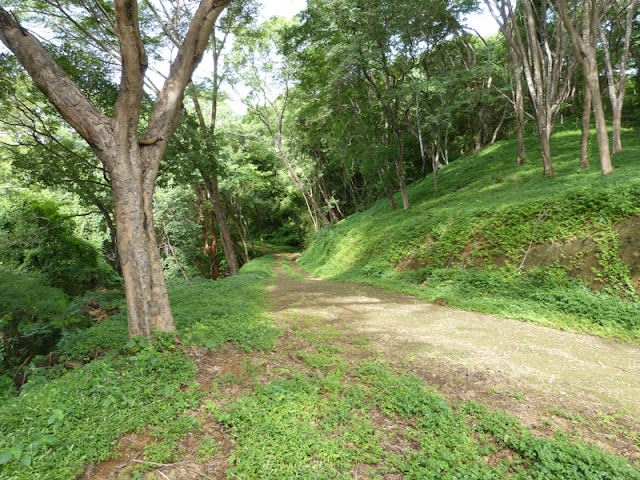A collection of observations about butterflies here in Scotland and notes of the butterflies I have seen when on family holidays.
Sunday, 23 February 2025
Costa Rica Butterflies November 2024 - Part 1
Tuesday, 11 February 2025
East Lothian Butterflies 2024 - Part 2
Continued from my previous post.
The number of Small Skippers recorded took a dip after they have been increasing since they were first recorded in East Lothian in 2011.
Large Skippers are now found all across East Lothian, but we only receive a few records. I think it is quite a difficult butterfly to spot and identify as it zips about between flowers.
Ringlet numbers were a little lower than average, but nothing significant.
However, Meadow Brown numbers were down to about 75% of the average.
Holly Blue numbers crashed. After the odd sighting for many years their numbers have increased since 2019. They started off very well in the spring of 2024, but the summer generation was very much lower than expected. Across England the annual population fluctuates in response to a parasitic wasp. This wasp was discovered in 2024 by a local enthusiast who had reared some Holly Blues, only for some to fail with wasps appearing from the chrysalises.
There are a number of small, isolated colonies of Northern Brown Argus across East Lothian. They are found north of Traprain, east of Dunbar and in the Lammermuirs. Some of the known colonies may have died out and there are likely more undiscovered locations. Because of their remote locations we struggle to monitor how they are doing. In 20224 the Countryside Rangers received funding to plant Rockrose at a coastal site and they worked with Bear Scotland to plant up a south-facing road verge. Once these are established they will hopefully these will provide stepping stones between the existing colonies.
Grayling butterflies continue to be found at three semi-urban sites. Sadly two of these locations are being developed, so I suspect we may lose those colonies. The exciting new was that there was a Grayling photographed on North Berwick Law last summer and they were also seen in the Lammermuirs.
The Small Pearl-bordered Fritillary is a rare butterfly in East Lothian, but they are found in a couple of locations in the Lammermuir Hills. They were seen in one of the Lammermuir valleys last summer.
And finally, hairstreaks! We have long been aware of a few small colonies of Green Hairstreaks around East Lothian. They are mostly in quite remote locations in the Lammermuirs, so I don't often receive records of them. There was a colony in Saltoun Big Wood, but there have been no Green Hairstreaks recorded there in the last few years, since there was a fire in the small area of woodland where they were found.
Having found adult Purple Hairstreaks in 2022 at Woodhall and Dunglass, two enthusiasts returned to East Lothian to search for eggs last winter. They did a very thorough job collecting carrier bags full of terminal buds from fallen Oak twigs and branches and searching them with a magnifying glass to look for eggs. Amazingly they were successful in finding eggs in six woodland across East Lothian. The adult butterfly rarely leave the top of mature Oak trees, where they can be seen flying in the late afternoon and early evening. Despite a lot of effort searching these woods in the past Purple Hairstreaks haven't previously been recorded in these locations.
Probably the most exciting news of 2024 was the sighting of a White-letter Hairstreak in a garden in Haddington. This is the first sighting of this species in East Lothian. They have made their way out of Northumberland and into the Scottish Borders over the last few years, mostly along the Tweed Valley. So, this is a big jump for the species. However, one was also recorded in Edinburgh and another in Dundee. It is fascinating to consider how these butterflies have spread so far, or if they have been there for a while. It will be interesting to see how they do over the next few years.
It certainly wasn't a great year for butterflies, but I think East Lothian probably did better than the UK as a whole, with one or two species actually appearing in good numbers. Some of the species such as Meadow Brown, Comma and Red Admiral did amazingly well in 2023, so the lower numbers in 2024 are almost to be expected.
Certainly I noticed that numbers where I live in the Borders were pretty similar to East Lothian. Given the wet summer that we had it isn't really surprising that numbers were a bit down. The next few years will give a better idea of how things are going. Let's hope for some decent weather!!
As always, thank you very much to everyone who took part in a transect or who sent in records. I am always delighted to receive them.
.jpg)
.jpg)





.jpg)


















